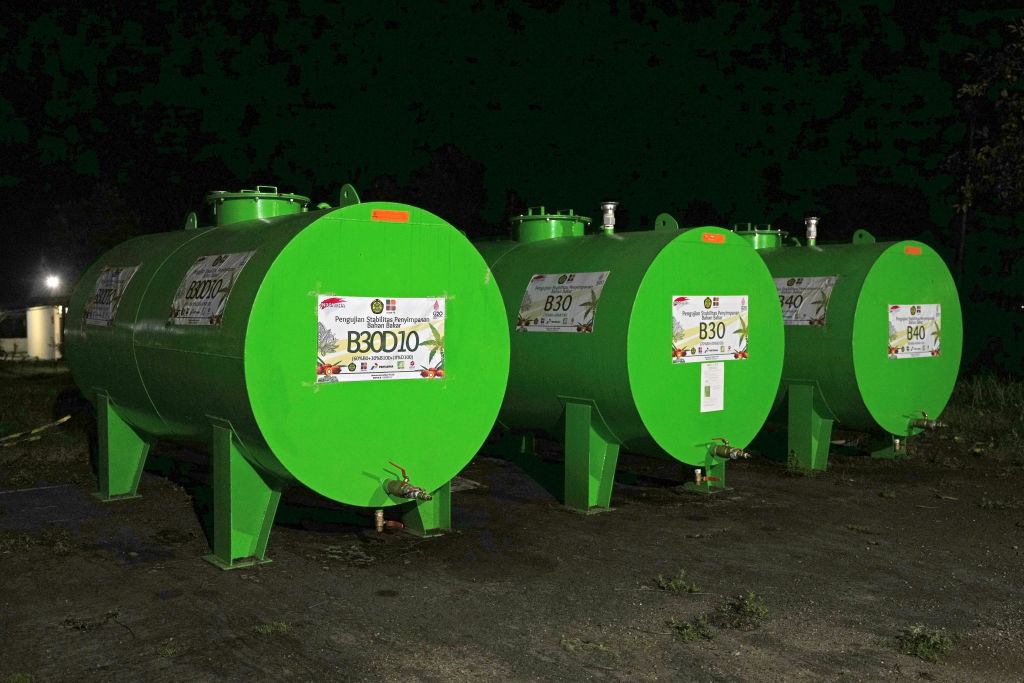Bioethanol, a renewable fuel derived from organic materials, has garnered significant attention as a sustainable alternative to fossil fuels. In Indonesia, the push towards bioethanol has seen renewed momentum in the past year, with Pertamina, Indonesia’s state-owned oil and gas company, introducing E5 (Pertamax Green). A blend of regular fuel with 5% bioethanol, it is now available at 15 fuel stations in Jakarta and Surabaya.
This launch represents a significant milestone in Indonesia’s efforts to integrate renewable energy into its transportation sector. The introduction of E5 aims to reduce the country’s reliance on fossil fuels, decrease greenhouse gas emissions, and promote cleaner air in urban areas.
Indonesia possesses vast potential for bioethanol production due to its extensive agricultural lands and favourable climate. But the challenge is to balance bioethanol production with the availability of sustainable feedstocks, such as sugarcane and cassava. A previous attempt to introduce bioethanol-blended fuel in 2007 was discontinued a few years later due to a lack of feedstock supply.
The previous failure of the bioethanol program in Indonesia is a valuable warning.
In 2023, the government released Presidential Decree No. 40/2023 on Sugar Self-Sufficiency, highlighting the need to balance bioethanol production with food security. Ensuring the bioethanol supply chain is one of the obstacles to development in the sector. The total production of fuel-grade bioethanol has only reached a fraction of that required to met expected demands. Yet forcing limited resources to provide bioethanol would potentially leave the project unsustainable, or have other unintended consequences across the food sector.
Learning from experiences in the United States and Brazil can provide valuable insights for developing a robust bioethanol industry in Indonesia. The United States presently leads bioethanol production with approximate 55% of global volume, predominantly made using corn. The US experience highlights the role of technological innovation, government incentives, and a strong agricultural base in developing a successful bioethanol industry. It shows the importance of diversifying feedstocks and investing in second-generation bioethanol technologies to enhance sustainability and reduce competition with food production.

Brazil is the world’s second-largest bioethanol producer, primarily using sugarcane as a feedstock, accounting for 27% of global production. Brazil produces cheaper ethanol without depending on fossil fuels for the supply of energy. Learning from Brazil’s experience, Indonesia should seek to develop its bioethanol industry with a similar blend of government support, favourable policies, and advanced agricultural practices.
Indonesia also should consider upgrading its technology to produce second and third-generation bioethanol. These advanced bioethanol technologies use non-food feedstocks such as agricultural residues, waste, and plant dry matter, known as lignocellulosic materials. By way of example, in 2018 local manufacturer LIPI converted palm oil shells into fuel-grade ethanol. While these technologies are still in the early stages of commercial feasibility, investing in research and development can accelerate their adoption and enhance the sustainability of bioethanol production.
A roadmap for technological development will be crucial to overcoming the current limitations and realising the full potential of bioethanol in Indonesia. This must include incentives to cover the price difference between the market index of bioethanol and petrol. The similar biofuel program, biodiesel, has benefitted from positive implementation. Not only has the percentage been increased from 2.5% in 2008 to 35% in 2023, but also the country can save state budget funds on fuel by reducing diesel imports.
Enhancing public awareness about bioethanol is critical for the successful implementation of this plan – explaining the benefits for sugarcane farmers as well as consumers. To achieve this, the public needs to be educated about the benefits of this fuel option, as well as the fact that it will not compete with sugar for consumption.
Rather than rushing to achieve implementation targets that have been set, and risking the project falling short, careful steps must be taken. The previous failure of the bioethanol program in Indonesia is a valuable warning. The roadmap should include where new sugarcane fields will open, how the government will improve the welfare of farmers, what steps can be taken to increase sugarcane productivity, and where the fuel-grade bioethanol manufacturing industry will be built.
By preparing the roadmap that protects sugarcane farmers and offers fiscal support for bioethanol production, while also easing the way for investors to invest, Indonesia could develop a robust bioethanol industry that supports rural development, creates jobs, and boosts the agricultural sector.

